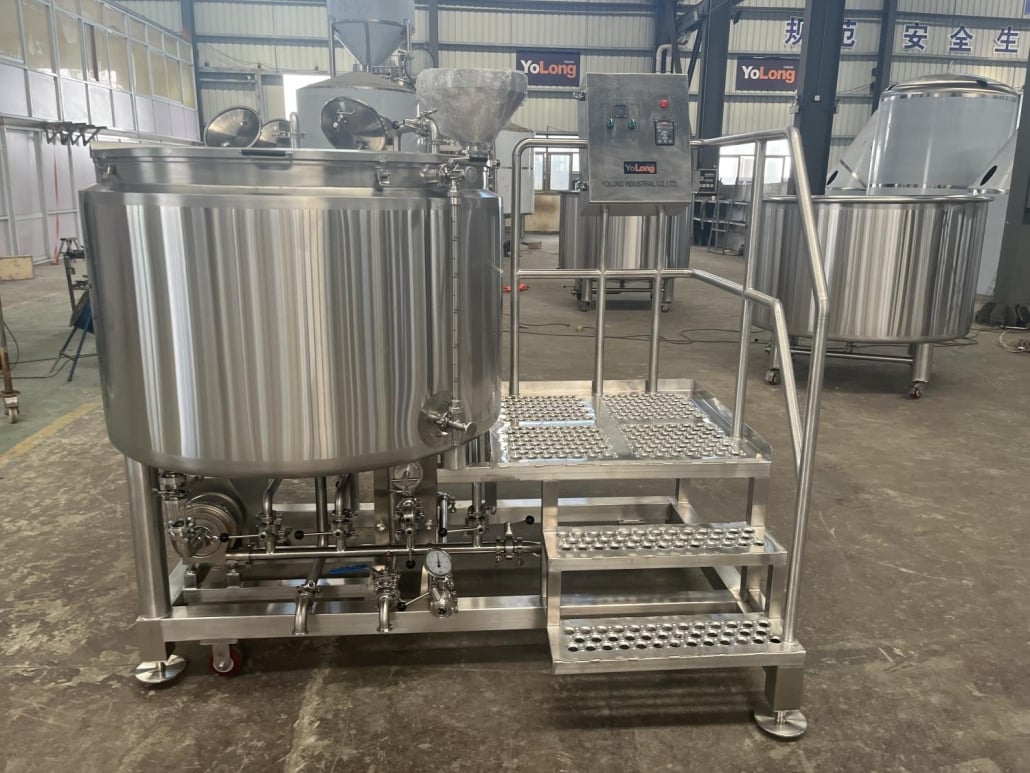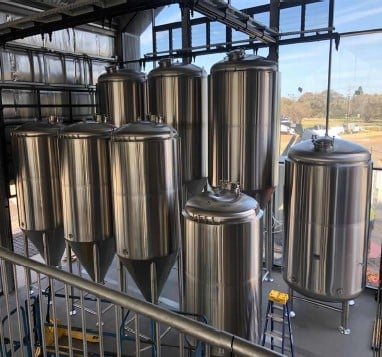Micro Beer Brewing Equipment
Overview of Micro Beer Brewing Equipment
The world of craft beer has taken off in recent years, and it’s not hard to see why. There’s something incredibly rewarding about brewing your own beer at home or on a small commercial scale. Microbreweries are the heart of the craft beer industry, where brewers can experiment with flavors and techniques. But whether you’re an enthusiast brewing in your garage or a small business owner planning to launch a microbrewery, the right equipment is key.
This guide is designed to give you a comprehensive overview of micro beer brewing equipment. We’ll dive into the equipment you need, how it works, and how to choose the right setup. We’ll also explore the brewing process, the customization options for your brewery, pricing ranges, suppliers, and everything else you need to know to get started.

Present Equipment Guide for Micro Beer Brewing
When setting up a microbrewery, there’s a long list of equipment you’ll need to transform grains, hops, water, and yeast into beer. This equipment comes in various sizes, designs, and complexities, tailored to your brewing goals.
Types of Micro Beer Brewing Equipment
The equipment required for micro beer brewing includes everything from large stainless steel tanks to intricate piping systems. Each component plays a crucial role in creating your favorite brew, from mashing and fermenting to packaging the final product.
Here’s a closer look at some of the core equipment needed:
| Equipment | Description |
|---|---|
| Mash Tun | A vessel used to mix malted barley with hot water, converting starches to sugars. |
| Lauter Tun | Separates the liquid wort from the spent grain. |
| Brew Kettle | Used to boil the wort and add hops. Boiling sterilizes the wort and allows hops to infuse flavors. |
| Fermentation Vessels | Where the wort is fermented into beer. Yeast is added to the wort in these tanks, and fermentation begins. |
| Heat Exchanger | Rapidly cools the wort after boiling, before transferring it into the fermenter. |
| Brighter Tanks | After fermentation, the beer is clarified and carbonated in bright tanks, ready for packaging. |
| Pumps and Piping | Move liquids (like wort, water, and beer) between vessels during the brewing process. |
| Bottling/Canning Lines | Automated systems that package the final beer product into bottles or cans. |
| Kegging Systems | For microbreweries that sell kegs, kegging systems are used to fill, clean, and maintain kegs for beer distribution. |
The Brewing Process: Step-by-Step
Now that you have an understanding of the equipment involved, it’s essential to know how each piece fits into the brewing process. Microbrewing follows the same fundamental process as large-scale commercial brewing, just with smaller batch sizes and a more hands-on approach.
1. Mashing
The brewing process begins with mashing. In the mash tun, malted barley is mixed with hot water to extract sugars. This step is crucial because it determines the alcohol content and overall flavor profile of the beer. The temperature of the mash can be adjusted to affect the body and sweetness of the beer.
2. Lautering
Once the mash is complete, the wort (a sugary liquid extracted from the malt) is separated from the spent grain in the lauter tun. This is an important process, as it ensures that only the clean wort moves on to the next stage. The spent grain can then be used as animal feed, reducing waste.
3. Boiling
The wort is then transferred to the brew kettle, where it is boiled for a set amount of time. During this stage, hops are added to the mix. Boiling serves multiple purposes: sterilizing the wort, evaporating unwanted volatile compounds, and extracting flavors from the hops.
4. Cooling and Fermentation
After boiling, the wort is quickly cooled using a heat exchanger and transferred to the fermentation vessels. Yeast is added, and the fermentation process begins. Depending on the type of beer, this can take anywhere from a few days to several weeks.
5. Conditioning and Packaging
Once fermentation is complete, the beer is moved to bright tanks, where it’s carbonated and clarified. Finally, the beer is either packaged using bottling or canning lines or transferred into kegs for distribution.
Capacity, Spaces, Design, and Layout of Microbreweries
When it comes to designing your microbrewery, space utilization and layout are critical factors. Not only does the equipment need to fit within your designated area, but it should also be organized in a way that supports efficient brewing and cleanliness. The size of your brewing system will often depend on how much beer you plan to produce. Here’s a look at how different elements of microbrewing equipment play into capacity, design, and customization.
| Aspect | Description |
|---|---|
| Capacity | Microbreweries usually produce between 3 and 30 barrels of beer per batch. |
| Space Requirements | Most microbreweries require at least 1,000 to 2,000 square feet of space. |
| Design & Layout | Equipment should be organized to facilitate workflow from mashing to packaging. |
| Customization | Equipment can be customized to fit the brewery’s production needs and branding. |
Micro Beer Brewing Equipment Price Range
Pricing for micro beer brewing equipment can vary significantly depending on the scale of your operation, the quality of the materials, and the level of automation. Here’s a general breakdown of costs for different types of microbrewery setups:
| Equipment Type | Price Range (USD) |
|---|---|
| Home Brewing Kits | $500 – $2,000 |
| Small Commercial Systems | $10,000 – $50,000 |
| Full-Scale Microbrewery Systems | $100,000 – $500,000+ |
| Fermentation Tanks (10-30 BBL) | $10,000 – $50,000 each |
| Bottling/Canning Lines | $20,000 – $150,000 depending on size and level of automation |
| Kegging Systems | $5,000 – $50,000 depending on size and automation level |
Suppliers of Micro Beer Brewing Equipment and Price Ranges
There are several well-known suppliers of microbrewery equipment. They offer various levels of service, customization options, and price points, depending on your budget and brewing needs.
| Supplier | Products Offered | Price Range |
|---|---|---|
| Ss Brewtech | Brewing systems, fermenters, and accessories. | $5,000 – $100,000+ |
| Blichmann Engineering | Homebrewing systems and commercial-scale equipment. | $1,000 – $50,000 |
| Specific Mechanical | Turnkey brewery systems and custom equipment. | $50,000 – $500,000+ |
| Psycho Brew | Small-scale brewery equipment for nano and microbreweries. | $10,000 – $250,000 |
| Premier Stainless Systems | Full-service brewery solutions including kegging systems. | $20,000 – $300,000 |
Installation, Operation, and Maintenance of Micro Beer Brewing Equipment
Operating a microbrewery goes beyond simply purchasing the equipment. Proper installation, operation, and maintenance are vital to keep everything running smoothly and ensure the quality of your beer.
| Aspect | Details |
|---|---|
| Installation | Most suppliers offer installation services. Ensure proper plumbing, electrical, and safety standards are followed. |
| Operation | Brewing systems come with manuals; staff training is crucial for efficient operation. |
| Maintenance | Routine cleaning, inspection of valves, pumps, and tanks is necessary to prevent contamination and equipment damage. |
How to Choose a Supplier for Micro Beer Brewing Equipment
Selecting the right supplier for your micro beer brewing equipment is one of the most important decisions you’ll make. Here’s a detailed look at factors you should consider:
| Criteria | Details |
|---|---|
| Reputation | Look for suppliers with positive reviews and a long-standing presence in the industry. |
| Customization Options | Choose a supplier who offers customization based on your brewery’s size, budget, and brewing style. |
| Support and Warranty | Ensure they provide comprehensive support for installation, troubleshooting, and maintenance. |
| Cost vs. Quality | Don’t just go for the cheapest option—find a balance between affordability and high-quality materials. |
| Delivery and Installation | Opt for suppliers that offer delivery and installation services to avoid complications. |
Advantages and Disadvantages of Micro Beer Brewing Equipment
When deciding on micro beer brewing equipment, it’s crucial to understand the pros and cons to ensure you’re making the right investment.
| Advantages | Disadvantages |
|---|---|
| Customization: Tailored systems to suit your specific brewing needs. | Cost: High initial investment, especially for quality equipment. |
| Scalability: Easy to scale production by adding more tanks or equipment. | Maintenance: Requires regular upkeep and cleaning to prevent contamination. |
| Control: Total control over the brewing process allows for experimentation. | Space: Large equipment requires a significant amount of space. |

FAQ
| Question | Answer |
|---|---|
| What’s the difference between homebrewing and microbrewing? | Homebrewing is typically done on a small, non-commercial scale. Microbrewing involves more advanced equipment for business use. |
| How much space do I need for a microbrewery? | Most microbreweries need at least 1,000 to 2,000 square feet, depending on production capacity. |
| Can I upgrade my system later? | Yes, most brewing systems are scalable, allowing you to add more tanks or capacity as your business grows. |
| How long does it take to brew a batch of beer? | The brewing process typically takes 2 to 4 weeks, depending on the type of beer and the fermentation time required. |
| What is the most expensive part of a microbrewery setup? | Fermentation tanks and packaging systems (like bottling/canning lines) tend to be the most costly. |
Conclusion
Starting a microbrewery is an exciting and rewarding journey. While there’s a significant upfront investment, having the right micro beer brewing equipment will set you up for success. From choosing your mash tun to setting up your bottling line, every piece of equipment plays a crucial role in bringing your beer to life. By understanding the brewing process, considering space and design, and picking the right supplier, you’ll be well on your way to crafting your own unique brews for beer lovers to enjoy.
Share this entry
Interested in learning more about Brewing Systems including additional details and pricing information? Please use the form below to contact us!
YOLONG BREWERY EQUIPMENT FAQS
- Commercial Brewery / Craft Brewery / Microbrewery / Nanobrewery
- What is The Difference Between Craft Beer and Industrial Beer?
- The Bespoke Differences In Custom Brewing Systems
- Everything You Need to Know About Kettle Souring
- How to Choose Brewing Equipment for Your business?
- How To Choose The-Best Partner To Build Your Commercial Microbrewing System?
- Two Detection Sensors That You Need To Use In Your Brewhouse System
- Remote Control Applications in Brewing Equipment/How does it work?
- How To Clean Your Brand New Brewery Tanks?

